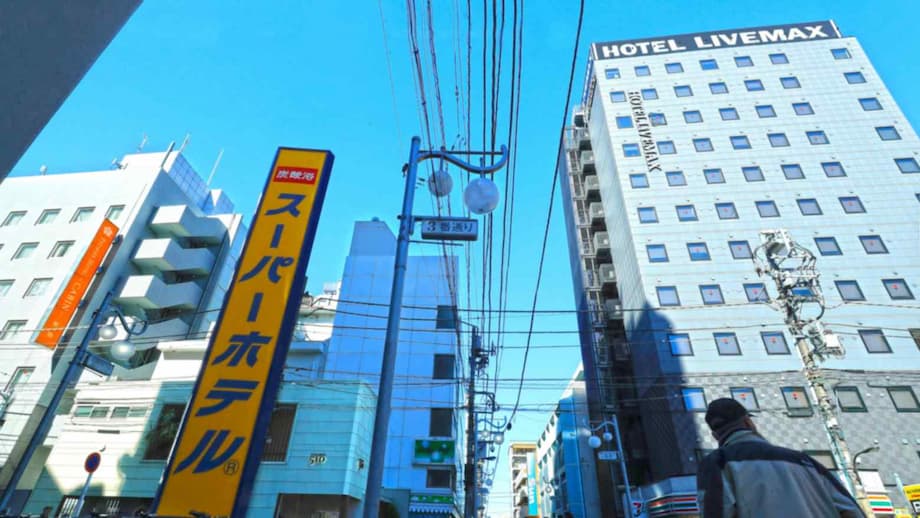Why Tokyo prices dipped for the first time since 2022
Hotel prices in Tokyo fell more than 2 percent in July from the previous year, the first decline in two years and nine months. The slide breaks a long run of steady gains and points to a temporary swing in traveler demand. Many visitors, both domestic and international, pivoted toward Osaka during the peak months of Expo 2025. At the same time, online chatter about a possible July earthquake in Japan nudged some travelers to rearrange their itineraries. The combination softened occupancy in the capital and put downward pressure on rates for the month.
- Why Tokyo prices dipped for the first time since 2022
- Expo 2025 turns Osaka into the center of gravity
- Rumors of a July earthquake influenced planning
- How hotel pricing responds to shocks and surges
- Wider economic stakes around the Expo
- Regional winners and traveler workarounds
- Practical planning for the busy season
- Outlook for late 2025
- The Bottom Line
Tokyo has been among the most resilient urban hotel markets in Asia since borders reopened. A weak yen has supported inbound spending, and an active calendar of conferences and events has kept rooms full across many districts. July stands out because it shows how a one off global attraction and viral risk narratives can quickly reallocate nights between Japan’s largest cities. The easing does not suggest a fundamental weakening in Tokyo’s appeal. It indicates that when a once in a generation event opens in another region, and when rumors affect risk perception, pricing models adjust in real time.
Expo 2025 turns Osaka into the center of gravity
Osaka is hosting Expo 2025 from April 13 to October 13 on Yumeshima Island. Organizers prepared for participation from more than 150 countries and set a planning range of up to 28.2 million visitors. National pavilions, corporate showcases, and late afternoon and evening programs encourage longer stays and repeat visits. Hotels, restaurants, and transport operators across the Kansai region expanded capacity and reworked schedules to catch the surge.
The action plan by the Japan Association for the 2025 World Exposition projected that about 90 percent of attendees would be domestic, and that nearly 40 percent would travel from outside the Kinki region (western Japan). Those shares explain why bookings tightened early in Osaka and nearby cities. Group training for pavilion teams and exhibitor staff filled room blocks in the run up to opening and through the summer.
Visitor numbers, tickets and occupancy
Advance sales were running behind targets before opening. By mid March, about 8.21 million tickets had been sold against an advance sales goal of 14 million. That shortfall raised questions about attendance. Traffic picked up once the grounds opened and summer programming started to drive day and evening visits. Osaka’s hotel market was already tight. A Japan Tourism Agency survey showed an average occupancy in 2024 of 75.8 percent, second highest among prefectures after Tokyo. During the Expo window, capacity constraints were visible in central Osaka and around key rail hubs, with Kyoto absorbing spillover demand.
Prices reflected that strain. Travel advisors and booking patterns pointed to room rates in Osaka rising by roughly 30 to 50 percent across many mid range and top tier properties for core months. Kyoto’s traditional inns brought forward deposit schedules and tightened cancellation terms. Travelers who based themselves in Kobe or Nara often found more stable prices and shorter booking lead times, then commuted by rail to the Expo site.
Infrastructure and transport
Local authorities and operators worked to smooth access. Upgrades included a subway extension to Yumeshima, more frequent trains between Osaka and Kyoto, expanded airport transfers, special bus routes, and additional ferry options. The shinkansen between Tokyo and Osaka remained efficient, yet peak morning and evening services drew heavy demand. Flexible travelers found it easier to secure seats in mid morning or early afternoon. An official visitor app helped guests plan around crowds with schedules, maps, and alerts.
Rumors of a July earthquake influenced planning
Separately, social media posts circulated claims that a large earthquake would strike Japan in July. There is no scientific method to forecast the exact timing of a major earthquake months in advance. The Japan Meteorological Agency and seismology experts routinely caution against acting on such predictions. Early warning systems can provide only a small number of seconds of notice just before shaking starts, not weeks or months of advance certainty.
Rumors can still shape behavior. Some travelers postponed or shortened Tokyo stays during July. Others centered their trips on Osaka and nearby cities, then returned to Tokyo later in the season. The effect did not derail the capital’s visitor economy. Combined with the Expo draw, it was sufficient to soften average rates for a single month.
How hotel pricing responds to shocks and surges
Most hotels in Japan use revenue management tools that adjust rates in line with demand signals. When searches, group blocks, and pickup accelerate in a city, prices rise. When calendars show gaps, rates soften to entice short lead bookings. Dynamic pricing is now common at both global chains and independent properties, and its effects are easy to see around major events.
Supply and staffing set hard boundaries. Osaka has added new rooms over the past two years, including international luxury brands such as Four Seasons and Waldorf Astoria. Even with fresh inventory, an event that concentrates millions of visits in a defined window can push prices higher. Labor is another limiting factor. Hotels cannot sell every key if they do not have enough staff to operate at full capacity. That constraint has persisted in 2024 and 2025 across many Japanese cities.
Tokyo’s market is broader and deeper, with business, leisure, and group segments that diversify risk. A short term leisure shift in July did not change that balance. The weak yen continues to make dining, shopping, and attractions feel affordable to overseas visitors. If Expo driven demand normalizes after autumn, rate pressure can return to Tokyo around holidays, festivals, and convention weeks.
Wider economic stakes around the Expo
Economic expectations for the Expo are large. Japan’s Ministry of Economy, Trade and Industry estimated the nationwide effect at around 2.9 trillion yen. A separate study by the Asia Pacific Institute of Research put the impact near 2.75 trillion yen. These totals depend on final attendance and on how much spending is genuinely incremental rather than a shift from other trips within Japan.
Costs and revenues have been closely watched. Construction outlays rose compared with early budgets, and pre opening ticket sales lagged targets. Organizers sought to boost attendance with summer programming, national day ceremonies, and marquee cultural events. The grounds also serve as a showcase for technology and health themes, which can draw repeat visits from schools, families, and professionals.
Urban projects are timed to the event. Metro and road improvements around Yumeshima, new hotel pipelines, and waterfront redevelopment aim to deliver lasting benefits. Analysts expect a cooling period after October as travel patterns reset. A second growth wave is possible if the planned integrated resort advances and if new transport links continue to reshape visitor flows.
Regional winners and traveler workarounds
Osaka and Kyoto captured the bulk of Expo related nights. Kobe, Nara, and Wakayama picked up overflow when central districts were full. Destinations such as Hiroshima, Kanazawa, and Hakone benefited as foreign visitors stitched together longer routes across Kansai and Chugoku, then returned to the capital for fly out days.
Tokyo’s hotels did not sit empty. Families and first time visitors still paired the capital with Mount Fuji or coastal escapes. The shift was in the margin. A share of travelers who might have split a week evenly between Tokyo and Kansai chose to center the trip on the Expo and add Kyoto or Hiroshima as side visits.
Anecdotal reports from trip planners and booking forums pointed to higher nightly costs in Osaka and Kyoto during autumn 2025 compared with 2024, even for mid market properties. Tokyo also saw firm pricing in October and November, although increases looked less extreme than in Kansai. Early booking and shoulder season travel helped keep budgets in check.
Practical planning for the busy season
Visitors heading to Osaka during the Expo window benefit from early decisions. Lock in refundable rooms once dates are set. If central Osaka prices are steep, consider a base in Kobe or Nara. Both are within easy rail reach of Yumeshima and usually offer more balanced rates. In Kyoto, look at lesser visited districts and be ready for stricter cancellation terms at traditional inns.
On transport, reserve shinkansen seats ahead of weekends and holidays. Mid morning or early afternoon departures tend to offer better availability. Within Kansai, frequent trains between Osaka and Kyoto keep travel times short, yet stations can be crowded around Expo opening and closing hours. Build extra time into connections and plan meals away from the busiest hubs.
Popular restaurants and attractions may require advance reservations. Some temples and gardens in Kyoto use timed entry or early morning access for overnight guests. Digital queues and extended hours at major attractions can help distribute crowds, but patience is still useful on peak days.
Outlook for late 2025
The balance between Tokyo and Osaka is likely to shift again after the Expo closes in October. Osaka will transition from event driven spikes to a more even flow of visits. Tokyo could see rates firm during autumn events and year end travel, particularly if the currency remains weak and inbound interest stays high. A mild normalization in Kansai pricing is possible as supply becomes more available and as demand spreads out over time.
Hotel operators will track booking curves week by week. If late season attendance remains strong at the Expo, the pull toward Kansai may continue into October. If it eases, some demand could rotate back to Tokyo sooner. The July dip in Tokyo rates looks like a snapshot of extraordinary competition for nights rather than a structural change in traveler preference.
The Bottom Line
- Tokyo hotel rates fell more than 2 percent in July from the previous year, the first drop in two years and nine months.
- Expo 2025 in Osaka attracted visitors away from the capital during peak months, tightening Kansai hotel markets.
- As of mid March, about 8.21 million advance tickets had been sold against a 14 million goal, with attendance supported by summer programming after opening.
- Osaka’s 2024 occupancy averaged 75.8 percent, second only to Tokyo among prefectures.
- Estimates for the Expo’s national economic effect range from about 2.75 trillion to 2.9 trillion yen.
- Travelers managed costs by booking early or staying in Kobe or Nara and commuting by rail.
- Unfounded earthquake rumors influenced some July travel choices, adding to the shift.
- Rates in Tokyo can firm again after the Expo, while Kansai pricing may gradually normalize.




